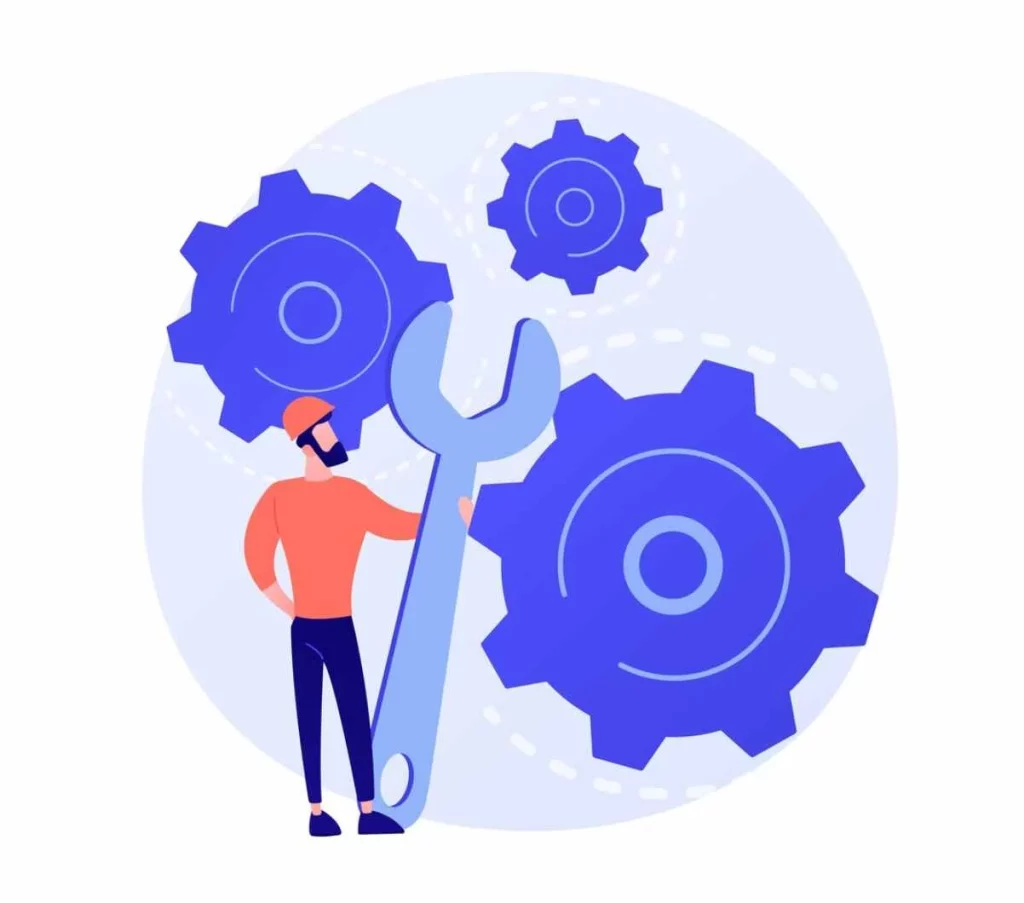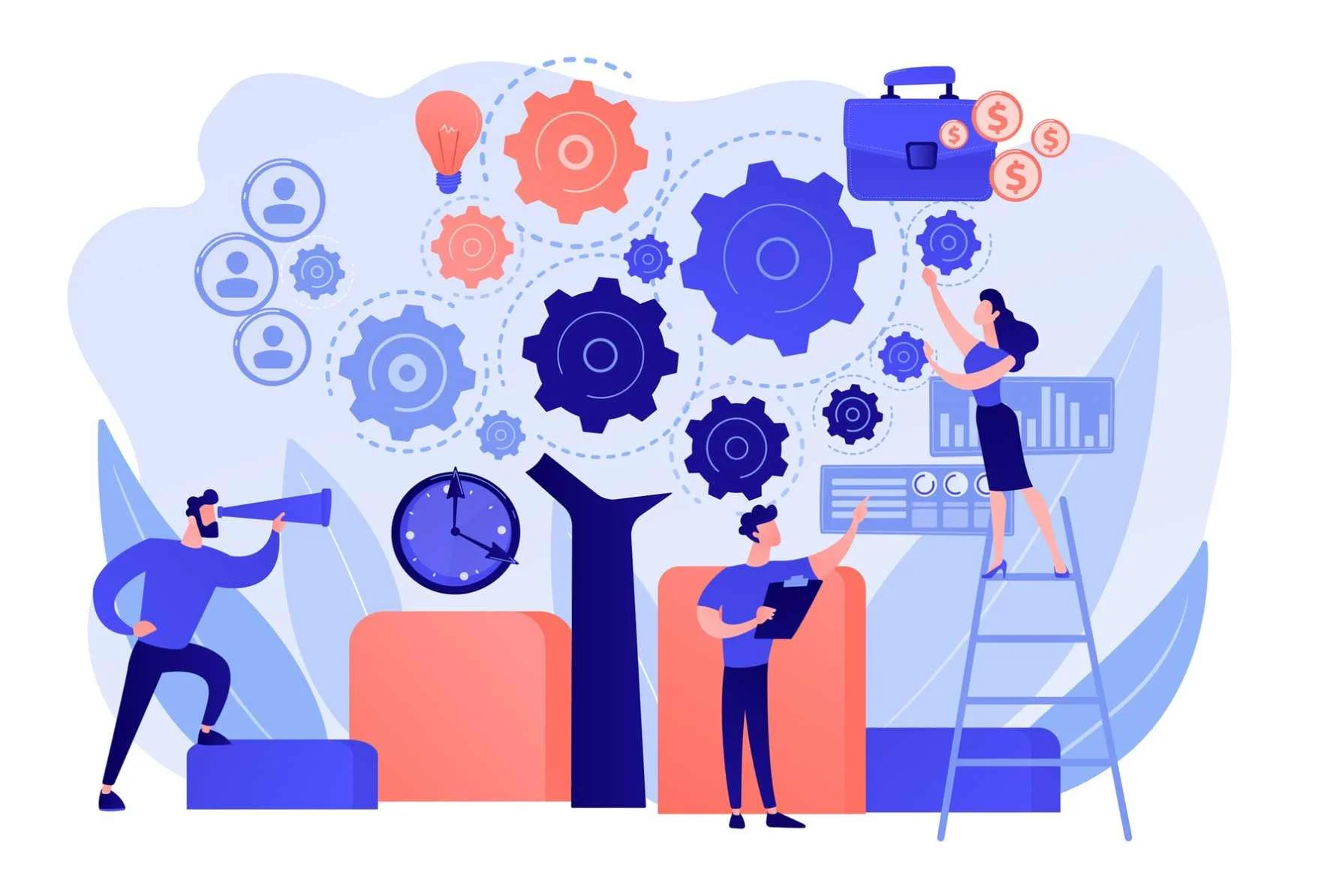Maintenance management is a critical element for ensuring business continuity and maximizing productivity. Effective maintenance of equipment, machinery, and infrastructure helps anticipate costly breakdowns and ensures information security.
- Maintenance Management: Definition
- Methods and Best Practices in Maintenance Management
- Technologies and Tools for Maintenance Management
- How to Evaluate Maintenance Management Performance?
Maintenance Management: Definition
Maintenance management is a vital area in any organization that uses equipment, machinery, or infrastructure requiring regular upkeep to ensure proper functioning and extend their lifespan. Here is a more detailed explanation along with associated objectives.
DéDefinition of Maintenance Management
Maintenance management encompasses all activities related to the planning, organizing, execution, and monitoring of preventive, corrective, and predictive maintenance operations. It aims to maximize the operational availability of assets while minimizing costs and ensuring the safety of people and property.
Objectives of Maintenance Management
- Optimization of Equipment Availability: One of the primary objectives of maintenance management is to ensure that equipment necessary for production or operations is available when needed. This involves implementing appropriate maintenance strategies to minimize unplanned downtime.
- Reduction of Maintenance Costs: Maintenance management aims to optimize costs associated with maintenance by implementing effective resource management practices, identifying necessary interventions at the right time, and minimizing unnecessary expenses.
- Improvement of Equipment Reliability and Lifespan: By performing regular preventive maintenance and responding quickly to breakdowns, maintenance management contributes to improving equipment reliability and extending their useful life.
- Safety of Operations: Ensuring the safety of people, property, and the environment is another important objective of maintenance management. This involves ensuring that equipment is in good working order and compliant with safety standards.
- Optimization of Human and Material Resources: Effective management of human and material resources involved in maintenance is essential for maximizing operational efficiency. This may include staff training, efficient use of spare parts, and optimization of work schedules.
- Regulatory Compliance: By following best maintenance practices and adhering to current regulations, maintenance management helps organizations comply with legal standards and avoid potential penalties related to non-compliance.
In summary, maintenance management aims to ensure the availability, reliability, safety, and efficiency of equipment and infrastructure while minimizing the costs associated with their upkeep. It plays a crucial role in the overall performance of an organization.

Methods and Best Practices in Maintenance Management
Needs Analysis in Maintenance
The analysis of maintenance needs is a fundamental step to ensure the proper functioning of equipment and installations. Here are some methods and best practices associated with this phase:
- Risk Assessment: Identify critical equipment and assess the risks associated with their failure. This can be done using techniques such as Failure Modes, Effects, and Criticality Analysis (FMECA).
- Regular Inspections: Implement a regular inspection program to detect signs of deterioration or malfunction in equipment before they become major problems.
- Performance Monitoring: Use key performance indicators (KPIs) to track equipment performance and identify needs for preventive or corrective maintenance.
Planning Maintenance Activities
Effective planning of maintenance activities allows for resource optimization and minimizes downtime. Here are some methods and best practices associated with this phase:
- Work Order Management: Use a work order management system to plan, prioritize, and track maintenance activities. Ensure that relevant information such as required spare parts, necessary skills, and deadlines are included in each work order.
- Preventive Planning: Establish a preventive maintenance schedule based on manufacturer recommendations, historical maintenance data, and risk analysis results.
- Resource Allocation: Efficiently allocate human, material, and financial resources based on preventive and corrective maintenance needs.
Optimizing Maintenance Processes
Optimizing maintenance processes aims to improve the efficiency and reliability of maintenance operations. Here are some methods and best practices associated with this phase:
- Continuous Improvement: Adopt a continuous improvement approach by identifying and eliminating waste, inefficiencies, and sources of time loss in maintenance processes.
- Staff Training: Provide regular training to maintenance personnel to ensure they have the skills and knowledge necessary to perform their work effectively and safely.
- Use of Technology: Integrate specialized tools to automate administrative tasks, track equipment performance, and facilitate spare parts inventory management. But what tools are available?

Technologies and Tools for Maintenance Management
CMMS Systems
Computerized Maintenance Management Systems (CMMS) are software solutions that manage all maintenance activities within an organization. They offer features such as intervention planning, spare parts inventory management, intervention tracking, report generation, and more.
These systems are essential for centralizing and optimizing the management of maintenance resources and activities.
Optimize the activity and time of your technician teams with a CMMS maintenance application. The right tool and service can save you time and effort while increasing productivity. Discover the benefits of a CMMS maintenance application.
Preventive and Predictive Maintenance
Preventive maintenance involves carrying out planned interventions on equipment before they fail, based on predefined schedules or specific criteria.
Predictive maintenance, on the other hand, relies on the use of sensors and monitoring technologies to detect early signs of failure and proactively intervene before a breakdown occurs.
Technologies used in these approaches include:
- IoT sensors (Internet of Things)
- Data analysis
- Artificial intelligence
- Machine learning to predict failures
- Maintenance management software for planning and tracking interventions
How to Evaluate Maintenance Management Performance?
Evaluating maintenance management performance can be done through various methods and indicators. Here are some of the most commonly used approaches:
- Equipment Availability Rate: Measure the percentage of time equipment is available for production. A high rate indicates effective maintenance management.
- Overall Equipment Effectiveness (OEE): OEE measures the overall performance of an installation by taking into account availability, performance, and quality. It is a holistic indicator of operational performance and maintenance management.
- Mean Time Between Failures (MTBF) and Mean Time to Repair (MTTR): MTBF measures the average time between equipment failures, while MTTR measures the average time needed to repair equipment. High MTBF and low MTTR values indicate effective maintenance management.
- Maintenance Cost Per Unit Produced: Evaluate maintenance costs relative to the production achieved. A reduction in maintenance costs per unit produced can indicate an improvement in maintenance management.
- Compliance Indicators with Maintenance Plans: Monitor adherence to preventive and predictive maintenance plans to ensure tasks are carried out on time.
- User or Operator Satisfaction: Collect feedback from end-users or operators on the quality and reliability of equipment to assess maintenance effectiveness.
- Safety Indicators: Monitor incidents related to safety to assess whether preventive maintenance is adequate to minimize accident risks.
- Spare Parts Inventory: Monitor spare parts inventory levels to ensure the availability of necessary parts without excessive overstocking.
- Planning Time vs. Execution Time: Measure the efficiency of planning maintenance activities against the actual time spent in the field.
- Performance Trend Analysis: Use data analysis tools to track performance trends over time and identify areas needing improvement.
By combining these indicators and monitoring them regularly, maintenance managers can effectively evaluate the performance of their maintenance management and identify areas needing improvement.
Maintenance management is, therefore, a fundamental pillar for any organization relying on equipment, machinery, or infrastructure that requires regular upkeep. Equip yourself with effective tools to help manage your maintenance interventions!
Nomadia makes your day easier by helping you plan your maintenance interventions.

